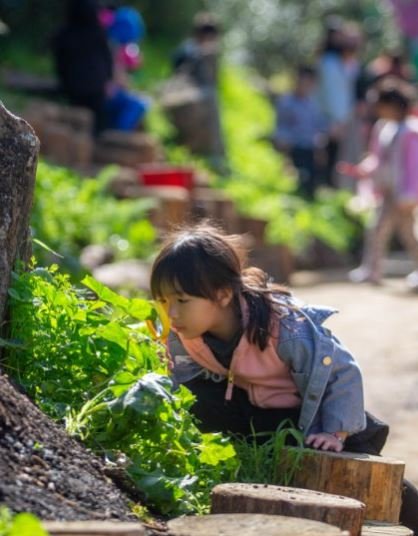
Connecting children with nature through thoughtful facilities design
Nature supports healthy development
Exposure to nature positively impacts children’s mental and physical health, leading to benefits such as increased creativity, memory, focus, and reduced stress. Green spaces enhance opportunities for social engagement, physical activity, and healthy risk-taking, supporting motor development and coordination. Outdoor environments also foster cognitive development, problem-solving skills, language acquisition, and reduce rates of obesity, attention deficit disorder, and depression.
Children’s connection to nature is weakening
Despite the benefits of outdoor play, American children's exposure to nature has decreased significantly, resulting in what Richard Louv calls “nature deprivation disorder.” This decline is partly due to busier schedules and increased focus on technology, as well as neighborhood designs that limit access to green spaces, particularly for families of color. Communities of color are more likely to live in areas with poor air quality, industrial pollution, and urban heat islands, making them more vulnerable to climate change impacts.

Impactful & thoughtful intervention: child care facilities
With two-thirds of American children under six in outside care, early education programs play a critical role in children's lives. Investing in these facilities to bridge natural and built environments can have lasting positive effects. Enhancing outdoor play areas and incorporating natural materials in classrooms support children's connection to nature and promote healthier development.

All Five
Menlo Park, CA
High-quality child care facilities should include climate-resilient outdoor play areas, especially in communities with limited green spaces. Designing these areas with natural elements like plants, rocks, and water features encourages exploration and sensory engagement. Bringing loose parts and natural materials into classrooms fosters creativity and reduces reliance on plastic toys.
Expanding access to nature in outdoor and indoor child care spaces
Preserving access to nature in the face of climate change
Outdoor learning spaces are vulnerable to climate change, making thoughtful design essential. Providing shade, using permeable surfaces, and incorporating vegetation can mitigate heat, flooding, and poor air quality. Effective HVAC systems and air purifiers are necessary to ensure safe indoor environments during adverse conditions. Investment in climate-resilient early childhood environments not only supports healthy development but also fosters lifelong appreciation for nature.

Family Connections
San Francisco, CA

